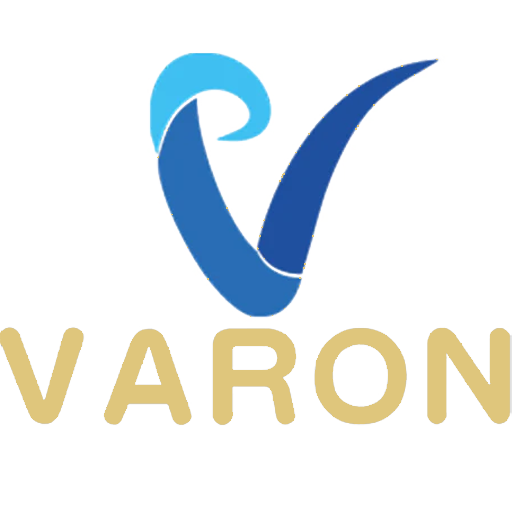Oxygen concentrators serve as invaluable tools for individuals requiring respiratory support, delivering a steady supply of oxygen to improve breathing and enhance quality of life. While oxygen concentrators are generally safe and effective when used as directed, it's essential to observe certain precautions to ensure their safe and proper use. In this article, we'll discuss important precautions to consider when using oxygen concentrators, safeguarding both users and caregivers against potential risks.
Understanding Oxygen Concentrators
Varon travel oxygen concentrator VT-1
Before delving into precautions for safe usage, it's crucial to understand how oxygen concentrators function and their role in providing respiratory support. Oxygen concentrators are healthcare devices designed to extract oxygen from ambient air and deliver it to individuals with respiratory conditions. Unlike oxygen cylinders, which contain compressed oxygen gas, concentrators generate oxygen on demand, eliminating the need for refills and storage of oxygen tanks.
Components of an Oxygen Concentrator:
-
Air Intake: Ambient air is drawn into the concentrator through an intake filter, where it undergoes filtration to remove impurities such as dust and airborne particles.
-
Compressor: The filtered air is then compressed to increase its pressure, facilitating the separation of oxygen from other gases.
-
Separation System: Oxygen concentrators utilize either membrane technology or pressure swing adsorption (PSA) to separate oxygen molecules from nitrogen and other gases present in the air. Membrane concentrators pass air through semipermeable membranes, allowing oxygen to pass through while retaining nitrogen. In PSA concentrators, oxygen is adsorbed onto specialized materials, allowing pure oxygen to be collected and delivered to the user.
-
Oxygen Delivery: Once separated, the concentrated oxygen is delivered to the user through tubing and nasal cannulas or oxygen masks. The flow rate and oxygen concentration can be adjusted to meet the individual's specific requirements.
Benefits of Oxygen Concentrators

-
Continuous Oxygen Supply: Oxygen concentrators provide a continuous supply of oxygen, ensuring consistent therapy delivery without the need for frequent replacements or refills.
-
Cost-effectiveness: Compared to oxygen cylinders, concentrators offer cost savings over time, as they utilize ambient air as their oxygen source and require minimal ongoing maintenance.
-
Portability: Portable oxygen concentrators allow users to maintain their mobility and independence, enabling them to engage in daily activities both at home and on the go.
-
Safety: Oxygen concentrators are designed with safety features to prevent oxygen enrichment and minimize the risk of fire or combustion hazards.
By understanding the components and functions of oxygen concentrators, users can appreciate the importance of precautions for safe usage, ensuring optimal respiratory support and peace of mind for individuals with respiratory conditions.
Precautions in Using Oxygen Concentrators
1. Consultation with Healthcare Provider:
Before initiating oxygen therapy with a concentrator, it's crucial to consult with a healthcare provider or respiratory therapist. They can assess your oxygen needs, prescribe the appropriate flow rate and oxygen concentration, and provide guidance on proper usage. Additionally, they can address any underlying health conditions or concerns that may affect oxygen therapy.
2. Avoiding Smoking and Open Flames:
Oxygen supports combustion, making it highly flammable in the presence of an ignition source. To prevent fires and explosions, it's imperative to avoid smoking or using open flames (e.g., candles, gas stoves) in the vicinity of oxygen concentrators. Establish a smoke-free environment and educate household members and visitors about the importance of fire safety.
3. Proper Ventilation:
Ensure adequate ventilation in the room where the oxygen concentrator is used to prevent the accumulation of oxygen and minimize the risk of oxygen enrichment. Keep windows open when possible and avoid placing the concentrator in confined spaces or areas with poor airflow. Good ventilation helps dissipate excess oxygen and maintains a safe environment for users.
4. Regular Maintenance and Cleaning:
Maintain your oxygen concentrator according to the manufacturer's instructions to ensure optimal performance and longevity. Clean the external surfaces regularly with a damp cloth and mild detergent, and inspect the device for any signs of damage or wear. Replace filters, tubing, and other consumable parts as recommended to prevent contamination and ensure hygienic oxygen delivery.
5. Preventing Tripping Hazards:
To prevent accidental falls or damage to the concentrator, ensure that tubing and power cords are positioned safely away from walkways and high-traffic areas. Use cable organizers or adhesive hooks to secure tubing along walls or furniture and minimize tripping hazards. Additionally, be mindful of pets and children around the concentrator and take precautions to prevent tampering or accidental disconnection.
6. Monitoring Oxygen Levels:
Regularly monitor oxygen levels in the blood using a pulse oximeter to ensure that therapy goals are being met and to detect any fluctuations in oxygen saturation. Follow healthcare provider recommendations for monitoring frequency and target oxygen saturation levels, particularly during rest, activity, and sleep.
7. Emergency Preparedness:
In the event of a power outage or equipment malfunction, have a backup plan in place to ensure continuity of oxygen therapy. Keep a supply of backup oxygen cylinders or portable oxygen concentrators on hand, along with a battery backup system for the concentrator if applicable. Familiarize yourself with emergency procedures and contact information for healthcare providers or emergency services.
Conclusion
Oxygen concentrators are valuable tools for providing respiratory support to individuals with oxygen requirements. By observing important precautions such as consulting healthcare providers, avoiding ignition sources, maintaining proper ventilation, performing regular maintenance, preventing tripping hazards, monitoring oxygen levels, and being prepared for emergencies, users can safely and effectively utilize oxygen concentrators to improve their quality of life and well-being. Always prioritize safety and follow manufacturer guidelines and healthcare provider recommendations for optimal use of oxygen concentrators.

